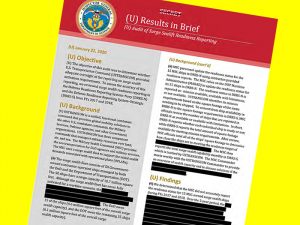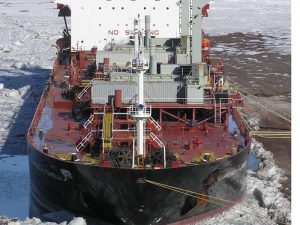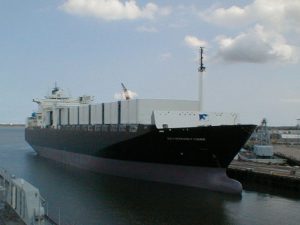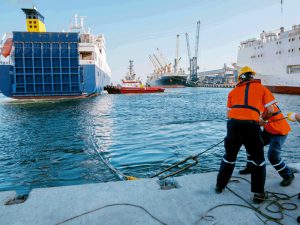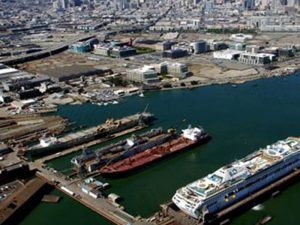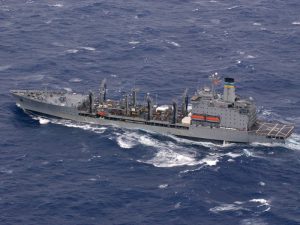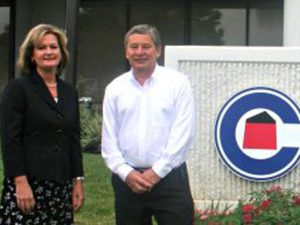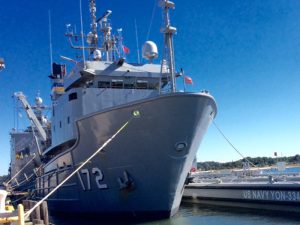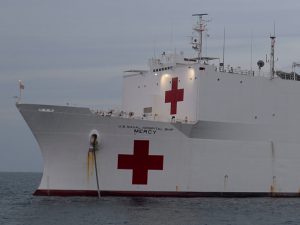One of the biggest concerns in shipping is finding and retaining qualified mariners. This is further exacerbated by the downturns in the oil and bulker markets, where vessels are being laid up or sold for scrap, leaving crews to find work where they can, possibly outside of the industry. Even before these mariners actually get their jobs, there is a plethora of regulatory barriers to obtain the original Certificate of Competency for officers, and even numerous hoops to jump through for the unlicensed as well. The 2010 Manilla Amendments to the STCW and the Maritime Labor Convention of 2006 have created further requirements than seen previously.
First and foremost a mariner must obtain a Transportation Worker Identity Credential (TWIC). In the past, mariners background checks were conducted by the USCG. Now the TWIC card reduces the Coast Guard need to conduct said checks, since the TSA is doing so. An original TWIC costs $128.00 out of the prospective mariner’s pocket, before they even have credentials or a job. At this point we are going to focus solely on the U.S. Mariner. Although STCW has standardized much of the training, the implementation in different countries can be vast.
The second step, and sometimes the most difficult to complete is the mariner physical. One would think that it is as easy as walking in to your family doctor’s office, handing them the form, and doing the physical. Unfortunately many doctors are not equipped to deal with the more specific items such as the color vision test. If your doctor cannot do this, then going to the eye doctor may suffice, but call ahead. Yours truly has found that not all eye doctors’ offices have the requisite tests that the Coast Guard wants. It is best to go to an OSHA clinic or a doctor who conducts FAA pilot physicals. The entire medical requirements can be found in NVIC 01-14.
The next step is to have a drug screening. Not any drug screening is acceptable. This must be done in accordance with 46 CFR 16.220, filled out on the appropriate DOT form and submitted to a USCG approved testing facility. This can range from $50 to $150 depending on your location. Many civil service drug tests do not count for the USCG requirements.
With the addition of an entry level rating application and the fees totaling $140 for MMC issuance and evaluation, a mariner is ready to begin looking domestically for a job. At this point the prospective mariner has possibly spent well over $400 of their own money, just to get a credential to work on board. What can an Able Seafarer expect to make? The monthly minimum according to the ILO is $614.00. Now on a U.S.-flag vessel, this low of a wage likely will not be seen. But U.S. seafarers working on foreign-flag vessels may see this.
This, however, is only the beginning. Gone are the days where an Ordinary, or even a Mess man could work their way up the hawse pipe all the way to Captain, without having to take an inordinate amount of classes and jump through bureaucratic hoops.
The next rung on the ladder to advancement is the Rating Forming Part of a Navigational or Engineering Watch. In order to accomplish this the candidate must either have a Qualified Assessor sign off on certain competencies. This is in addition to the required six-month sea time. Another option for the seafarer is to complete a training program approved by the USCG that includes two months of sea time. The price of this course? Anywhere upwards of $1,000.00.
After that, one can either go to a Maritime University, Union Training Center, local Captains School or acquire the requisite sea time and have the competencies signed off on in order to become a vessel officer. Either way the process takes several years of hard work, study, and dedication. In the end it is all worth it. But once you reach officer level, the workload to upgrade that license increases substantially. We will also touch on customer specific requirements for the training of crew and officers.
When I graduated SUNY Maritime in 1997, the school had not fully implemented STCW 95 in to the curriculum yet. Therefore, after graduation, myself and many of my classmates stuck around for a few weeks to complete these requirements. Nowadays the STCW requirements are included in to the curriculum and the cadets graduate ready to sail. From there however, the price of ambition can be high as we will see. Once upon a time officers would sit for each and every upgrade to their license. Now, at least on the deck side, a Third Mate only needs sea time to upgrade to Second Mate. Engineers are far more complicated as the type of plant must be taken into consideration. Plus, I am a deck officer, so I’m a little biased on the subject.
Upon upgrading to Second Mate, this officer must now go through a large amount of training to upgrade to Chief Officer. If the prospective Chief Officer has someone willing to sign off on their Celestial Navigation and Advanced Navigation competency sheets, they have just shaved 80 hours off of their training. If not, then the prospect may be taking close to 450 hours of training. This can be up to 12 weeks of classroom time. The cost? Upwards of $10,000.00. This is before paying the Coast Guard their fees for examination, evaluation, and license issuance. If the mariner is lucky their employer or union sponsors them for this training. As a former union sailor, I had no out of pocket costs for this training. If the mariner does not have a sponsor for this training, the price tag is quite substantial, especially in a market such as this, where jobs are becoming more and more scarce.
One would be led to believe that there could not possibly be any more training required after this. This is not necessarily the case. Management officers are often required to have undergone the Medical Person in Charge training and Fast Rescue Boat. Of course there is also the specialty training that needs to be taken in certain trades such as Person in Charge for Tankers, or Liquid Carriers, Crowd control and Crisis Management for those working passenger vessels. Those officers working for Military Sealift Command may be required to take Small Arms, Chemical, Biological, Radiological Defense Officer (CBR-D), and a manner of other courses dependent on the vessel the mariner will sail upon. These extra courses can total another month or two of the mariner’s off time.
There is a fair proportion of the maritime industry with personnel who have never spent any significant time at sea. That in it of itself is not a problem; not all jobs require seagoing experience. For many however, the mariner is viewed as a tool and not a person who has hopes, dreams, and aspirations. These mariners spend on average six months a year on the ship. Some may trade coastwise, some international
If six months is spent on the ship and then contract requirements or career ambitions require further training, a mariner can only have a total of a few weeks off each vacation to spend with family, friends, and loved ones. I am not proposing that we reduce the educational requirements. I believe that we will see a downward trend in accidents across the board in the coming years due to increased training. But other measures need be considered by ship owners and managers in order to allow the mariners to have a fair amount of time off to do the things that life may require of them and get that much needed rest in order to return refreshed and ready for work. If we are to retain the talent that is required to crew the vessels, than we must remember their humanity.


